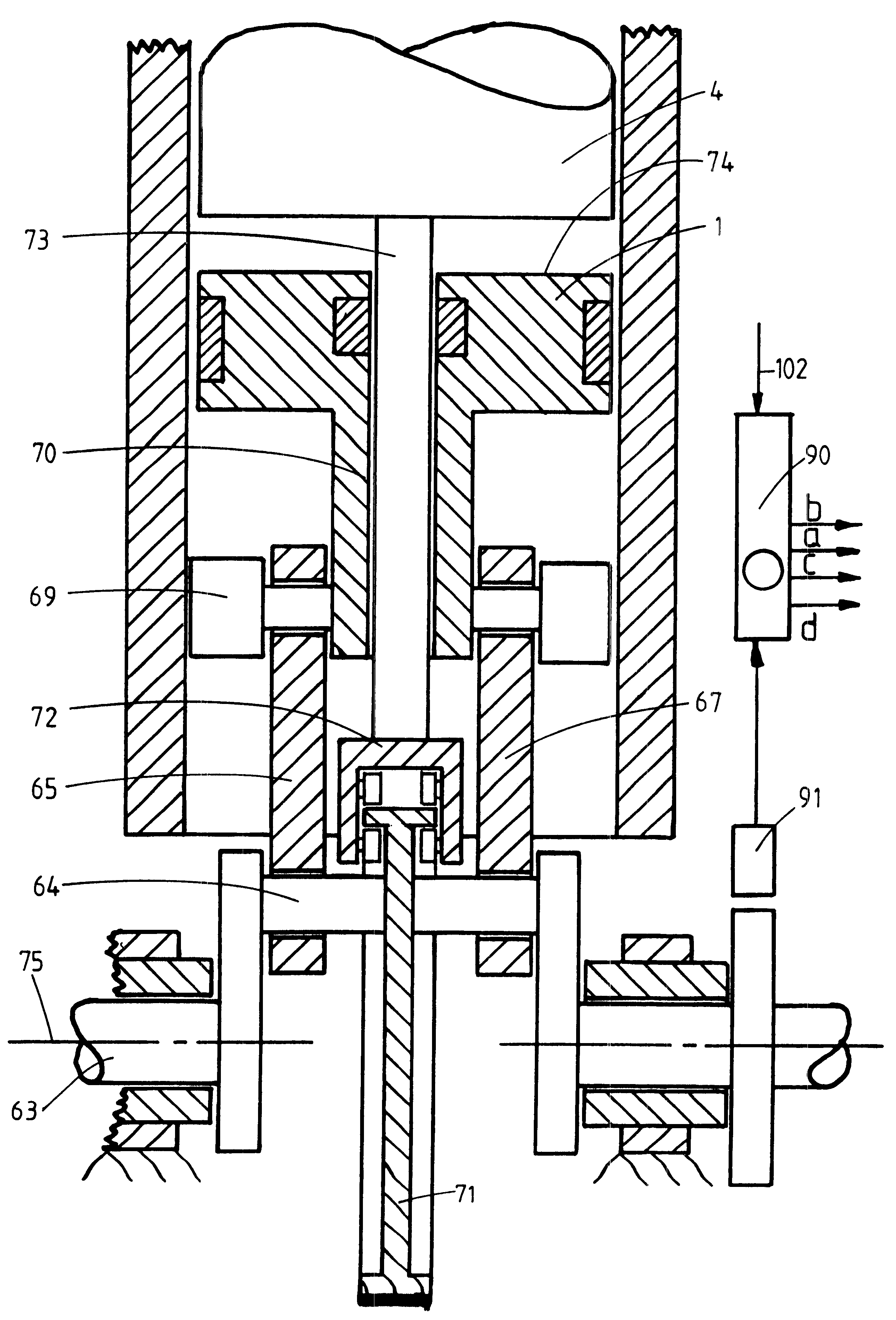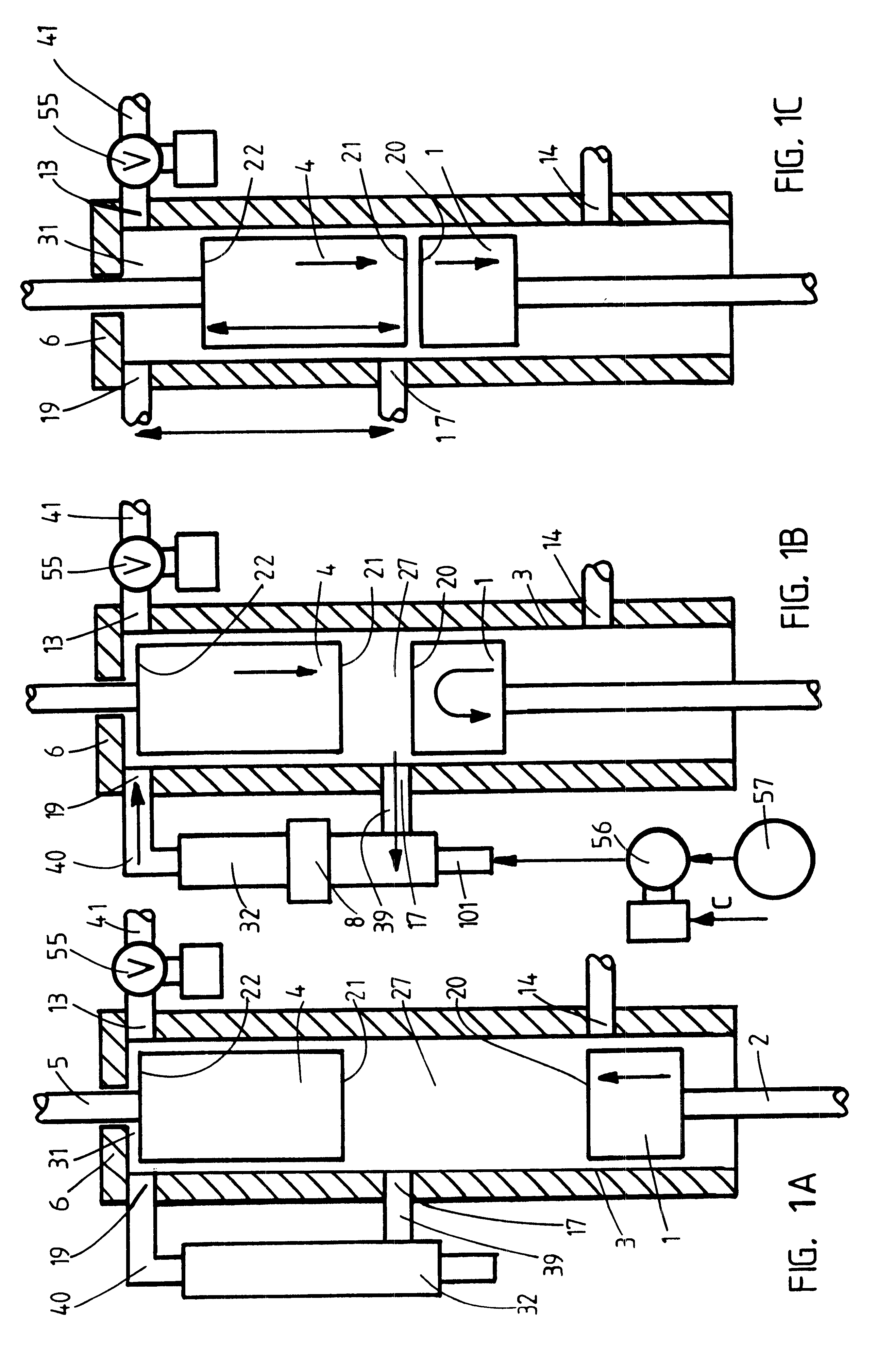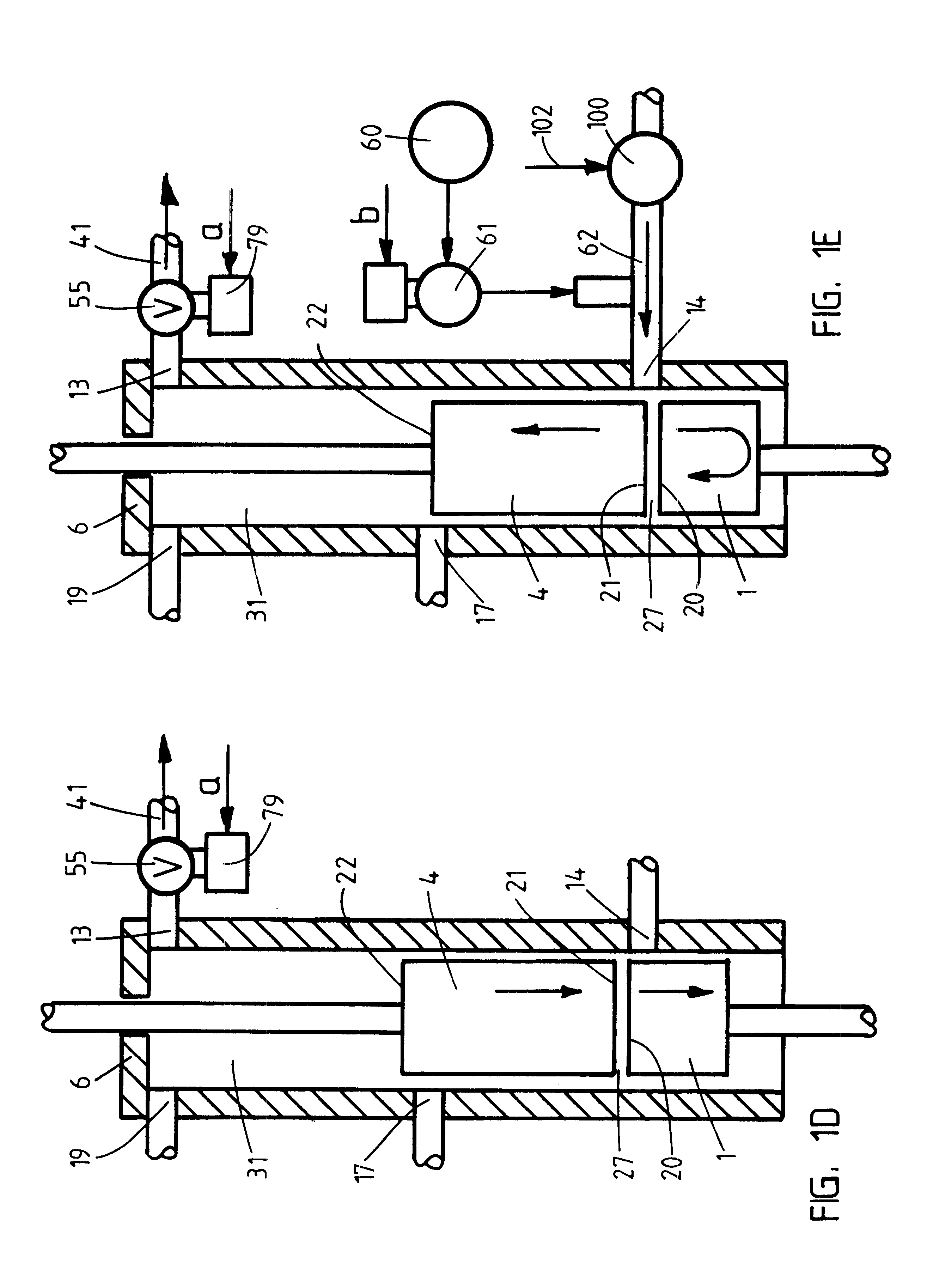Multifuel internal combustion stirling engine
- Summary
- Abstract
- Description
- Claims
- Application Information
AI Technical Summary
Benefits of technology
Problems solved by technology
Method used
Image
Examples
Embodiment Construction
A. Multifuel Internal Combustion Stirling Engines Cycle The cycle of operation, by a multifuel internal combustion Stirling engine of this invention, utilizes a compressor piston and a displacer piston, both driven to reciprocate within the same engine cylinder as shown schematically in FIGS. 1A, 1B, 1C, 1D, and 1E:
1. The compressor piston, 1, is driven via its piston rod, 2, back and forth through a fixed compressor piston stroke length, within the engine cylinder, 3;
2. The displacer piston, 4, is driven via its piston rod, 5, back and forth, within the engine cylinder, 3;
3. The engine cylinder, 3, comprises a gas cylinder head, 6, at the displacer piston end thereof, an exhaust port, 13, an intake air port, 14, an air transfer port, 17, and a burned gas port, 19;
4. The compressor piston comprises an air crown, 20, on the displacer piston side thereof; the displacer piston comprises an air crown, 21, on the compressor piston side thereof, and a gas crown, 22, on the gas cylinder he...
PUM
 Login to View More
Login to View More Abstract
Description
Claims
Application Information
 Login to View More
Login to View More - R&D
- Intellectual Property
- Life Sciences
- Materials
- Tech Scout
- Unparalleled Data Quality
- Higher Quality Content
- 60% Fewer Hallucinations
Browse by: Latest US Patents, China's latest patents, Technical Efficacy Thesaurus, Application Domain, Technology Topic, Popular Technical Reports.
© 2025 PatSnap. All rights reserved.Legal|Privacy policy|Modern Slavery Act Transparency Statement|Sitemap|About US| Contact US: help@patsnap.com



